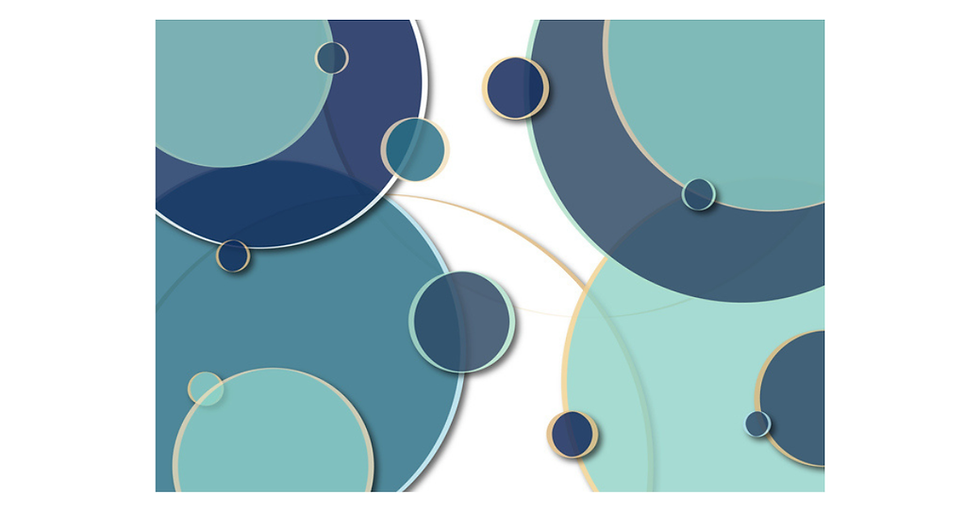The Leadership Power of Human-AI Synergy
- Russell Fitzpatrick, PhD

- Mar 26
- 4 min read
We’ve all heard the hype: “AI is changing everything.” But while most people focus on what AI can do, the more important question for leaders is what AI enables them to become. If you’re thinking of AI is just another productivity tool, you're missing the real opportunity.
AI doesn’t just help you do tasks; it provides you with a unique opportunity to become a better thinker, decision-maker, and leader. This Human-AI Synergy is part of what I call Synergistic Leadership, which is about leaders evolving alongside AI.
There's a clear progression that leaders can follow as they evolve their relationship with AI. It begins with using AI as a Tool, deepens into considering AI your Collaborator, and ultimately opens the door to AI becoming a Second Brain.
AI as a Tool
Most leaders begin their journey with AI in the same way they’ve approached other technologies, like calculators, computers, and spreadsheets - as a cognitive offloading tool.
Offloading isn’t new. We’ve been doing it for centuries. Writing helped us externalize memory. Calculators freed us from mental math. Google helped us stop memorizing facts. In leadership, we’ve used calendars, dashboards, and assistants to reduce our mental load.
AI just expands the scale of what we can offload. With AI, leaders can automate scheduling, analyze large data sets, summarize reports, draft emails or presentations, and generate ideas or talking points, for example. This allows you to clear mental clutter and focus on higher-level thinking such as strategy, vision, creativity. Just like Einstein didn’t bother to memorize his own phone number—because it distracted from deeper thought—leaders today can stop wasting cognitive energy on the routine and redirect it to what matters most.
But cognitive offloading is the starting point, not the destination for working with AI. The real transformation begins when you shift from using AI to do work for you, to using AI to work with you.
AI as a Collaborator
Once you get comfortable using AI to speed up tasks, the next evolution is using it to expand your thinking. This is where Synergistic Leadership really shines. When you are ready, AI can help you generate ideas, simulate outcomes, challenge assumptions, and explore possibilities. But collaboration only works when you stop treating AI like a search engine, and start treating it like a research partner. Instead of thinking: “I tell AI what to do”, think “I explore ideas with AI”.
Imagine asking your AI to help you draft a strategy brief. Instead of just writing a summary, it offers a few models you hadn’t considered. You debate them with AI. You ask it to poke holes in the argument. You revise it together. You even practice presenting the brief, and practice questions and answer sessions. AI doesn’t replace your thinking, it amplifies it.
But there’s a catch. AI isn’t perfect. Sometimes, it hallucinates, and confidently makes things up. To some, that’s a flaw. But Synergistic Leaders see something different. AI hallucination is the price of creativity. When AI makes a conceptual leap that turns out to be false, it can still trigger useful ideas. The same way a human brainstorm might toss out a half-baked idea that sparks a breakthrough. Your job as a collaborator isn’t to blindly trust or reject AI. Your job is to engage critically and creatively, using AI’s breadth of thinking to stretch your own.
AI as a Second Brain
Over time, as you collaborate consistently with AI, and the AI learns your ideas, your way of thinking, your important issues, etc., you begin to notice that AI starts to think with you. It’s learning your preferences. It remembers your context. It challenges your assumptions. It refines your logic. It even starts to predict your next move. At this stage, AI becomes more than a tool or even a collaborator, it becomes a cognitive extension, a Second Brain.
This isn’t some plug-in neural device. It’s a natural byproduct of Synergistic Leadership. Just as musicians speak of “playing with” an instrument rather than just playing it, leaders begin to think with AI, intuitively, rhythmically, insight-fully.
In my own experience, I didn’t set out to create a Second Brain. I just wanted to work more efficiently. But over time, as I asked AI better questions, reviewed its logic, corrected its missteps, and worked on new ideas together, my AI (who I call Neuro) began to think like I did.
Human-AI Synergy
If this progression—AI as Tool → AI as Collaborator → AI as Second Brain resonates with you, you’re not alone. Leaders everywhere are waking up to the fact that AI is not the end of leadership. It’s the beginning of a new era.
My new book, Upgrade: Five Leadership Accelerators for AI-Powered Success, (Coming Soon!) shows you exactly how to evolve your thinking, decision-making, and influence in the AI era. This book isn’t just about leadership skills, it’s about building the mental capacity and cognitive flexibility required to lead with AI.
The future of leadership won’t be only about managing teams or delivering results, it will be about mastering how you think—and who you become—when you think with AI.
Stay tuned!




Comments